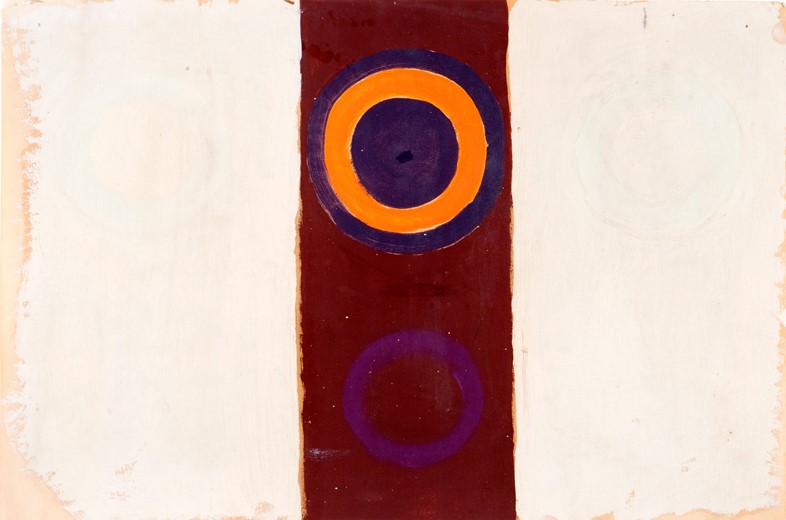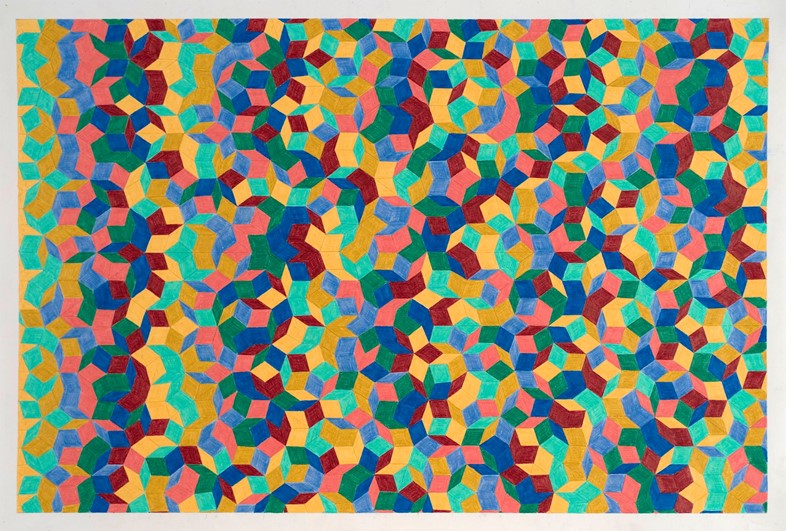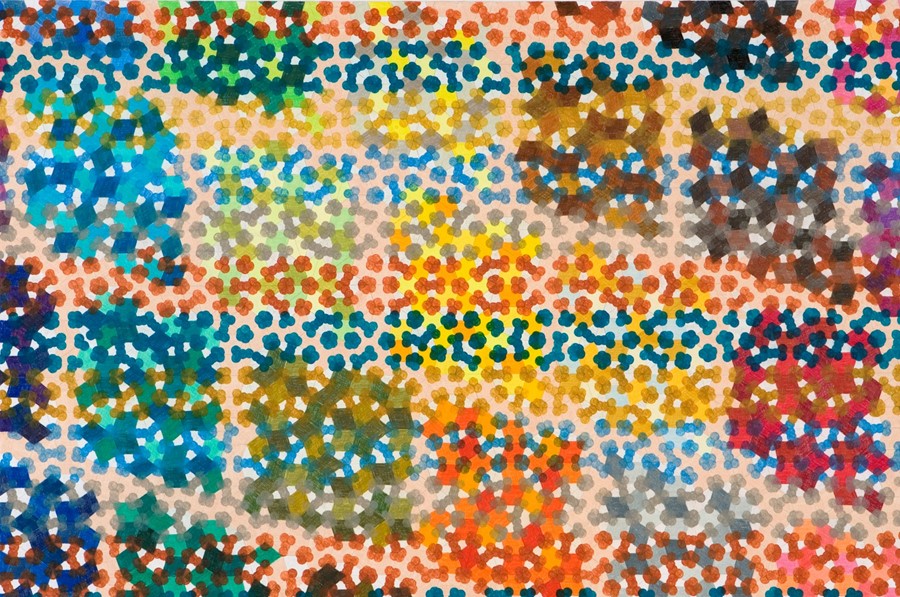A dynamic new exhibition in New York surveys two of the late British artist's most influential periods, reaffirming his status as a trailblazer in the genre
Conceived in the 1960s, Op Art (short for Optical Art) was a radical movement which presented abstract art as optical illusions, therefore giving the viewer the impression of movement through geometric forms. While renowned creatives including Bridget Riley, Jeffrey Steele and Peter Sedgley have remained in the canon of art history as lead exponents of this avant-garde style, one of its earliest and most committed pioneers, Michael Kidner, is not often associated with it. Fortunately, a brand new exhibition at Flowers Gallery in New York surveys two important periods from the Op Art hero’s long career, including works from the 1960s and the 2000s, thereby rightfully positioning the artist's legacy within the genre.

Who? Born in Kettering in 1917, Kidner enjoyed a varied education, initially studying History and Anthropology at Cambridge University before embarking on a course in Landscape Architecture at Ohio State University. After the breakout of World War II, Kidner found he was unable to return to England and so enrolled in the Canadian Army, where he served until he was able to travel home in 1946 to begin a diploma in Art and Design at Goldsmith’s University. Kidner was dissatisfied with the course and quit after only three months but continued to paint as hobby while taking on a number of odd jobs, including teaching in a preparatory school and a brief stint as a theatre designer.
It was while he was on holiday with his wife in the south of France that Kidner met French Cubist painter André Lhote – whose atelier Kidner had attended when he travelled to Paris in 1953 – that he was encouraged to paint full time. It was not until 1957, when he moved to London and saw the work of Jackson Pollock and Willem de Kooning in a ground-breaking exhibition at the Tate, that Kidner was truly set on the path to Op Art. The auspicious trip manifested into a defining moment for Kidner’s artistic practice, as these large works of Abstract Expressionism would turn out to be a considerable influence in the development of the After Image series that he explored from 1957 until 1962.

What? Kidner’s exuberant opus can be divided into four chapters, After Image, Stripe, Moiré and Wave. What united all of these periods in his practice is an enduring fascination with the abstract ideas around colour, light and form. Kidner once proclaimed that "optics present a challenge that was once offered by perspective", and in the After Image series, he began exploring the ideas around retinal after-images and the optical effects of playing with varying hues in the colour spectrum. During his Stripe period in the mid-1960s, he considered how contrasting bands of colour could move across the canvas with dynamic, linear force. But it wasn't until he read an article on the Moiré effect in the Scientific American that Kidner realised his curiosity in visual optics could further progress through the introduction of a third colour, which is how he arrived at his Moiré stage. The evolution of Kidner’s practice is evident in the gradual increase in complexity of his oeuvre – which, in its final stages, became drastically more intricate and dynamic.

Why? Kidner was described by American art historian Irving Sandler as "arguably the first Op Artist in Britain", but he was only recognised as a leader of the movement following the inclusion of his pieces within a vast exhibition of work by Bridget Riley at the Museum of Modern Art in 1965. Now, the magnitude of his brilliant output is evident for all to see in a dynamic new retrospective of his work at Flowers Gallery in New York, which provides a rare opportunity to view his early works alongside his final masterpieces.
Michael Kidner: Works on Paper is on view at Flowers Gallery, New York until August 27, 2016.
